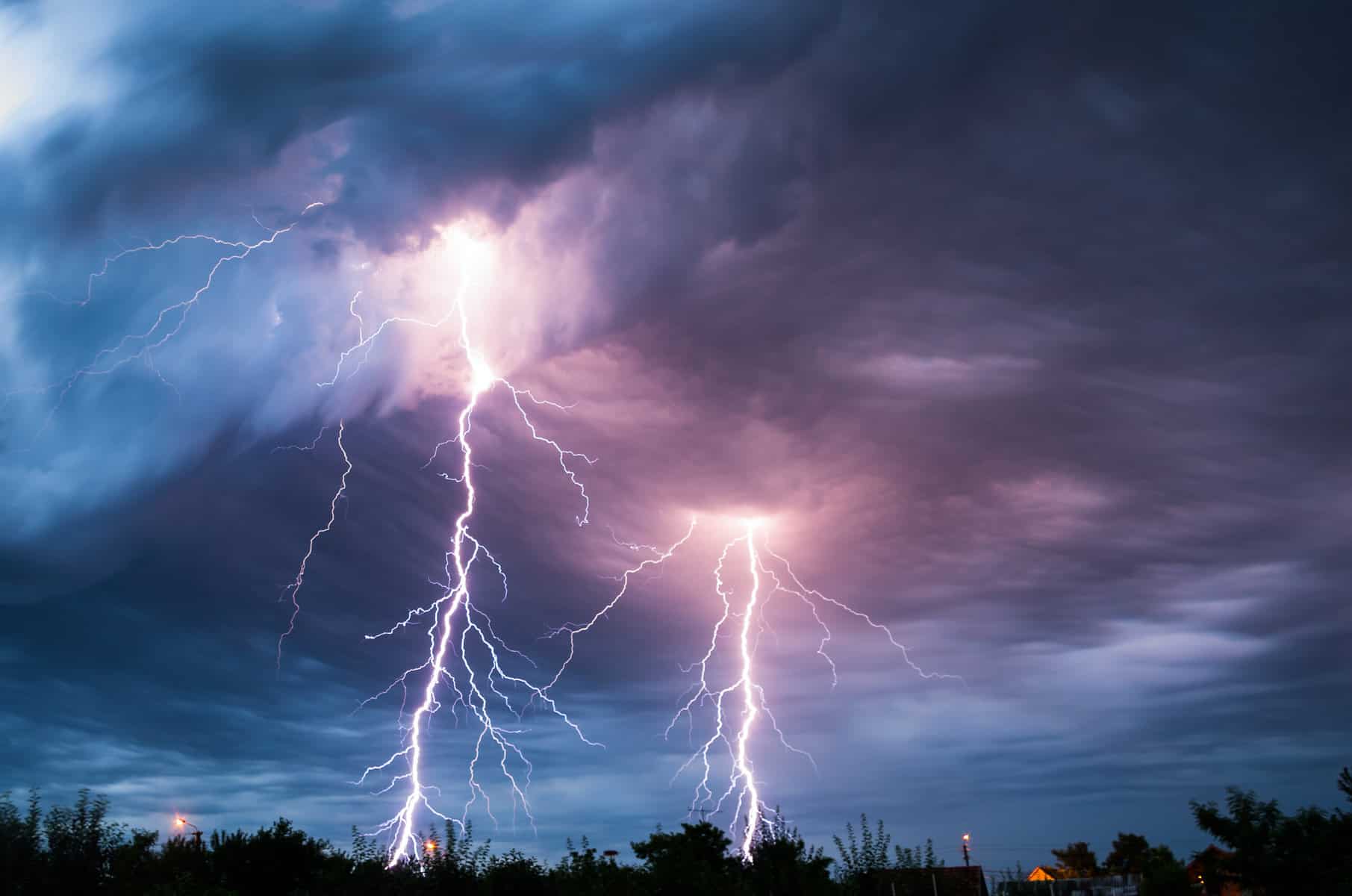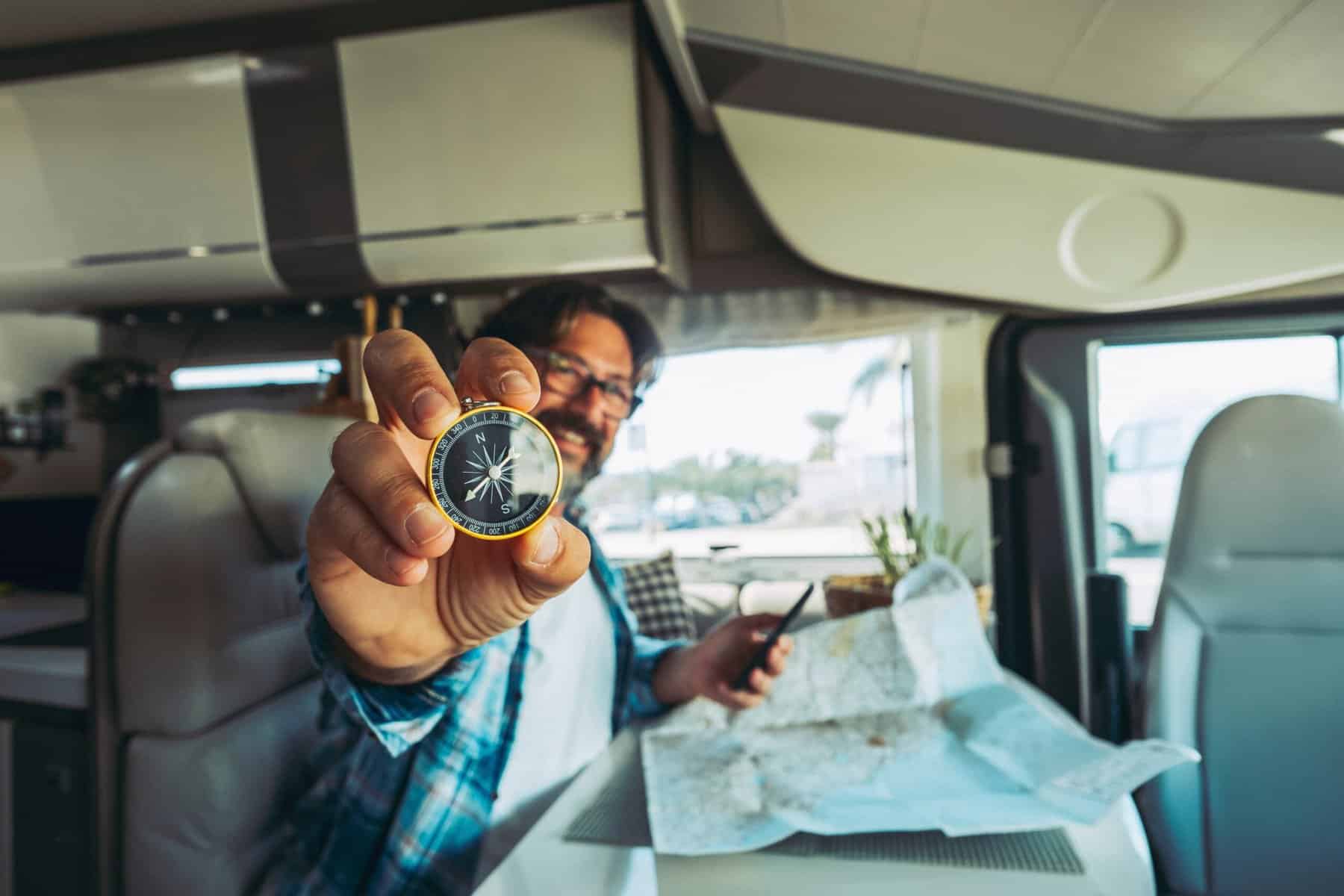Being safe in your RV is just as important as having fun in your RV!
Whether you are brand new to RVing or a veteran, there are many crucial RV safety accessories that every trailer and motorhome should be equipped with.
Unfortunately, many of us forget to maintain these safety features or completely forget that they’re even there.
Before you head out on your next adventure, make sure that your RV has these safety accessories and that they are updated and working.
1. Fire extinguishers
All RVs and towed vehicles should be equipped with fire extinguishers. You should have three fire extinguishers for your RV—one in the galley, one in the bedroom, and one outside of the RV in an unlocked basement compartment. Also, carry a fire extinguisher in your tow/toad.
Be aware that there are four classes of fire extinguishers: A, B, C, and D, and each one is for a specific type of fire.
Make sure family members know how to use the extinguishers and understand which extinguishers are effective on various fires.
2. Smoke alarm
Install and maintain at least one smoke alarm in your RV near the sleeping area. Special 12v smoke alarms, designed specifically for RVs, are available from Camping World and specialized retailers. Test monthly and replace batteries annually.
3. Carbon monoxide detector
Install and maintain at least one carbon monoxide detector in your RV near the sleeping area. Test monthly and replace batteries annually.
4. Propane (LP gas) detector
Install and maintain a propane (LP gas) leak alarm at floor level in your RV, no more than six inches above the floor. Test monthly and replace batteries annually.
5. First aid kit
A first aid kit readily available in an emergency isn’t just a good idea—it’s a necessity for every RVer.
A well-stocked first-aid kit can help you respond effectively to common injuries and emergencies. You can purchase first-aid kits and refills at the Red Cross store, most drugstores, or assemble your own.
Contents of a first-aid kit should include adhesive tape, antibiotic ointment, antiseptic solution or towelettes, bandages, calamine lotion, cotton balls and cotton-tipped swabs, gauze pads and roller gauze in assorted sizes, first aid manual, petroleum jelly or other lubricant, safety pins in assorted sizes, scissors and tweezers, and sterile eyewash.
Familiarize yourself with the items in the first aid kit and know how to properly use them. Check your first-aid kits regularly, at least every three months, to replace supplies that have expired.
The Mayo Clinic is an excellent source for first aid information to help you during a medical emergency.
If you travel with pets, Pet First Aid manuals are even available.
6. Gorilla tape
Gorilla Tape is a brand of adhesive tape sold by the makers of Gorilla Glue, and available in several sizes and colors, including camouflage, white, and clear. The tape is a reinforced form of duct tape and is marketed as being for the “toughest jobs on planet earth”.
Gorilla Tape can solve many problems while on the road—and you can do most anything with this stuff.
RVers have used it to temporarily repair a sewer hose, keep a driver’s side window from continually falling, and even affix the coffee maker to the counter so that it doesn’t move during travel.
It’s better and stronger than packing tape. Everyone should have Gorilla Tape and Glue in their toolbox — you do have a toolbox in your RV, right?
7. Toolbox
Just about anything in your RV that can snap, crack, rip loose, tear, bend, leak, spark, or fall off will do exactly that at the most inconvenient time. Something will need to be tightened, loosened, pounded flat, pried, or cut.
To help you deal with everyday problems and annoyances, maintain a well-equipped RV toolbox (store on curb side).
Contents should include Phillips and Robertson head and flat bladed screwdrivers (large, medium, small), standard and needle-nose pliers, channel-lock pliers (medium and large), 10-inch Crescent wrench, claw hammer, hobby knife with blade protector, wire cutters, tape measure, silicone sealant, Gorilla tape and glue, electrical tape, battery jumper cables, open and box-end wrenches, silicone spray, WD-40 lubricant, bungee cords, road flares/warning reflectors, fold-down shovel, stepladder, spare fuses, and heavy-duty tire pressure gauge.
Many RVers also carry a socket wrench set (standard and metric), small drill bit set and cordless drill with spare battery, and digital voltmeter.
8. Roadside safety kit
At some point during your adventure, you’re likely going to run into some kind of issue while out on the road. Whether these issues arise during the day or at night, you’re going to want a roadside safety kit with reflective discs/triangles, jumper cables and possibly even flares.
9. Tire pressure monitoring system
We’ve always believed that tire safety is crucial when it comes to an RV. We always suggest that checking your tire pressure should be one of the first things you do before you hit the road onto your next adventure.
A tire pressure monitor will allow you to maintain correct pressure in your tires which can help you void a blowout on the road. The great thing about these monitoring systems is that they’re portable and easy to store in most storage compartments.



